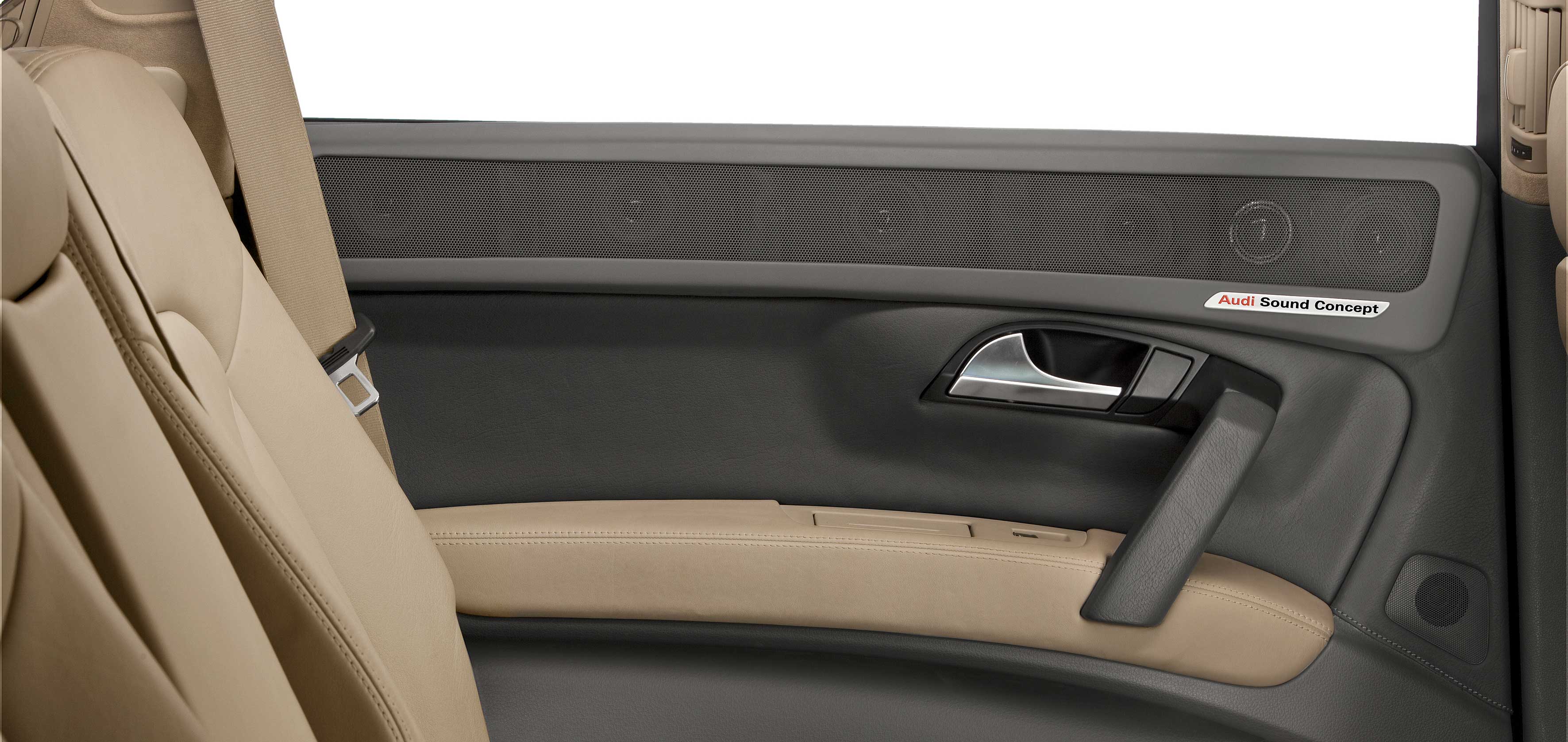System Components
- 62 loudspeakers
- 19“ rack industrial PC for loudspeaker signal computing
- 64-channel Class-D audio amplifier for distribution of audio signals to the speakers
- DVD audio/Blu-ray player for playing conventional audio formats
Loudspeaker Concept
The interior of the Audi Q7 is equipped with 62 speakers in total:
- 52 mid-range speakers to produce the Wave Field Synthesis effect
- 5 tweeters and 4 woofers to extend the frequency range
- 1 subwoofer.
User Interface
The sound system can be controlled over an iPad, a tablet PC, or the on-board MultiMedia Interface (MMI). A graphical user interface adapted to the system allows the user to conveniently
- visualize and switch between virtual rooms
- visualize and position the virtual sound sources
- display the speaker levels
- configure the sound
Room Acoustics Simulation
One special feature of the sound system is its capability to simulate specific room acoustics in the car’s interior. Basically any room characteristics can be simulated – be it an opera house or a nave. By means of efficient signal processing algorithms as many as 16 virtual sound sources can be positioned and arranged in realtime, with room acoustics automatically adapting to the movements of the sound source.

 Fraunhofer Institute for Digital Media Technology IDMT
Fraunhofer Institute for Digital Media Technology IDMT